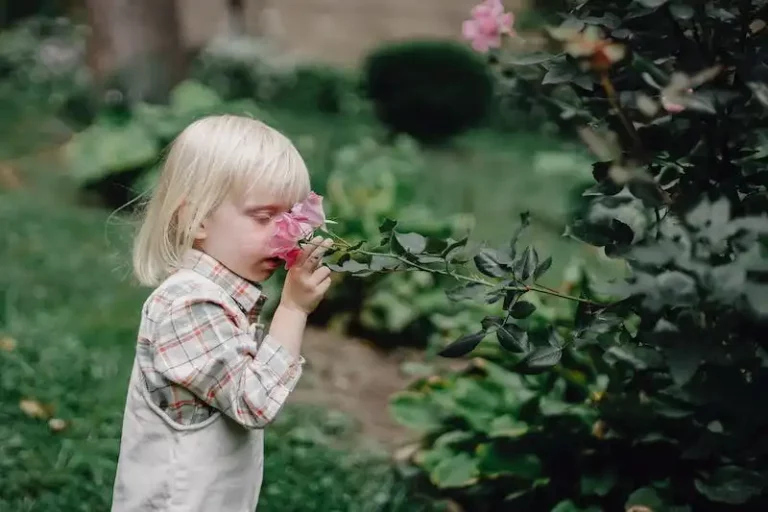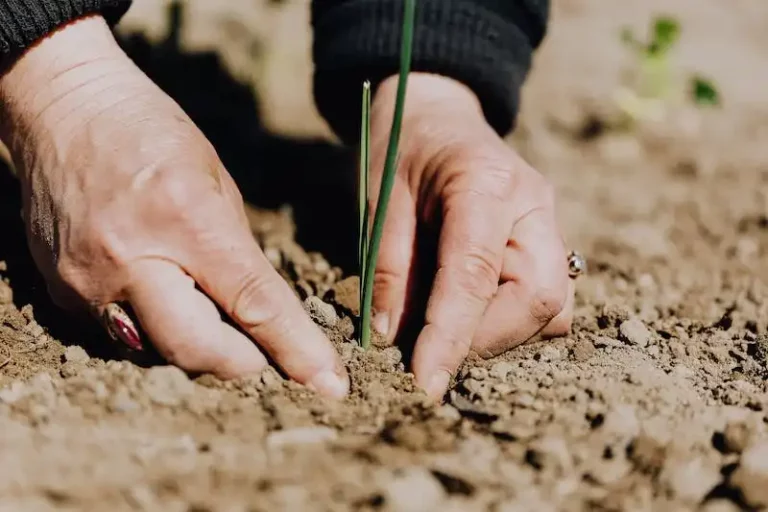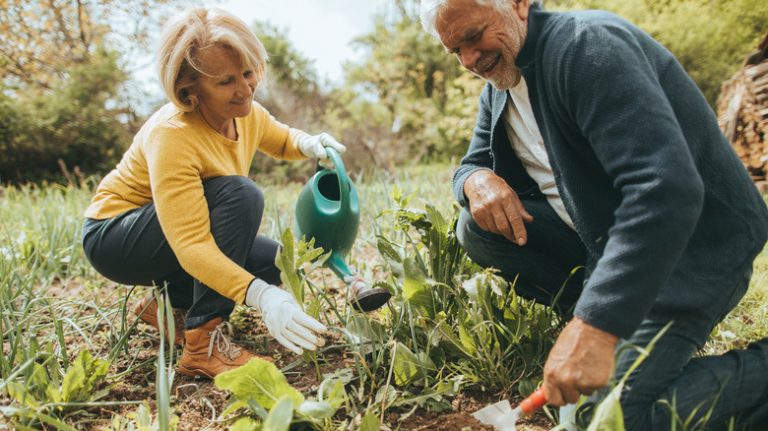When it comes to growing hollyhock blooms, timing is key. These beautiful flowers are a staple in many gardens, with their tall stalks and bright blooms adding color and height to any flower bed or garden. Whether you’re a seasoned gardener or new to the world of gardening, understanding the basics of hollyhock seed propagation is essential for successful growth.
Hollyhocks are biennial plants, which means they bloom every other year. The first year, they will produce a rosette of foliage, while the second year is when the tall stalks and flower blooms emerge. If you want to enjoy the beauty of hollyhock blooms, it’s important to plan accordingly and know when and how to plant the seeds.
The best time to plant hollyhock seeds is in early spring, after the threat of frost has passed and the soil has warmed up. This will give the seeds enough time to germinate and the seedlings to establish themselves before the harsh summer months. Start by preparing the soil by removing any weeds or debris and amending it with well-drained soil and organic matter. Thin soil should be amended with compost or other organic matter to ensure good drainage. Hollyhocks prefer a rich, well-drained soil and thrive in full sun.
Before sowing the hollyhock seeds, soak them in warm water for a few hours. This will help the seeds germinate more quickly. Sow the seeds directly into the soil, making sure they are covered lightly with soil. Water the area thoroughly after sowing to provide the seeds with the moisture they need to germinate. Keep the soil consistently moist, but not waterlogged, as this can lead to root rot and other fungal infections.
Once the seedlings emerge, thin them out to provide enough space for the plants to grow and mature. Young hollyhocks can easily become crowded and compete for nutrients, sunlight, and water. Transplanted seedlings should be located at least 12-18 inches apart to allow for proper growth and development.
In order to promote strong and healthy growth, regularly fertilize the hollyhocks with a slow-release fertilizer. This will provide the necessary nutrients for the plants to bloom and thrive. Additionally, hollyhocks can benefit from occasional deadheading to remove spent flowers and encourage further blooming.
With the right knowledge and care, hollyhocks can bloom from late spring to early fall, providing a beautiful display of colorful flowers. Their tall stalks make them a great choice for adding height and vertical interest to your garden. Just be aware that hollyhocks are frequently visited by deer, so if you live in an area with a deer population, you may need to take protective measures.
So, if you’re wondering when to plant hollyhock seeds for the best blooms, remember to plant them outdoors in early spring, provide them with well-drained soil and plenty of sunlight, and give them the necessary care and attention they need to thrive. By following the proper techniques and knowing the basics of hollyhock cultivation, you’ll be rewarded with bright and beautiful blooms that will enhance your garden for years to come.
Hollyhock Seeds
When it comes to hollyhocks, there is something magical about planting seeds and watching them grow into tall, vibrant blooms. These plants can reach heights of about 6 to 8 feet and have been a staple in gardens for years. The hollyhock has a long history and has been planted in gardens for centuries.
Hollyhocks are known for their showy flowers that come in a variety of colors, including pink, red, purple, white, and yellow. They can self-seed and create a beautiful display year after year.
When planting hollyhock seeds, it is important to choose a location that receives full sunlight. They prefer well-drained soil and can tolerate dry periods but will also benefit from regular watering. Hollyhocks are generally resistant to deer and other pests, making them a great choice for garden security.
If you want to start your hollyhock seeds indoors, they can be planted in pots or trays about 6 to 8 weeks before the last frost date. Once the seedlings have developed a few true leaves, they can be transplanted outdoors.
There are many different hollyhock varieties to choose from, including the popular Chater’s Double Mix that produces large, fully double flowers in a range of colors. Watchman is another variety that has deep maroon blooms and is resistant to rust infection.
Once planted, hollyhocks grow well on their own with minimal care. However, pruning the flower heads will encourage more blooms to form. In colder areas, hollyhocks may need some over-wintering protection to survive harsh winds or frosts.
So, whether you want to add some quick and vibrant color to your garden or create a beautiful backdrop for your yard, hollyhocks are a great choice. They’ll provide bright blooms year after year and are sure to be a customer favorite.
Feel free to ask us for any hollyhock-related questions or additional care information. Our botanical experts are here to help!
Description
When it comes to growing hollyhocks, there are a few things to keep in mind. Hollyhocks are biennial flowering plants that can reach heights of up to 6 feet and spread out to 4 feet wide. They are known for their vibrant, bright blooms that come in a variety of colors such as yellow, pink, purple, and white. These flowers can easily be grown from seeds, making them a popular choice for gardeners.
When planting hollyhock seeds, it is important to choose a location that receives full sunlight for at least 6 to 8 hours a day. While hollyhocks can tolerate some shade, they will produce the most blooms when given ample sunlight. The soil should be well-draining and amended with organic matter or compost to ensure the plants receive the nutrients they need to thrive.
Hollyhocks are relatively low-maintenance plants, although they do require regular watering. It is important to keep the soil evenly moist, especially during dry spells or hot summer months. However, be careful not to overwater, as hollyhocks are susceptible to fungal infections. To prevent this, it is best to water the plants at the base and avoid getting the leaves wet.
As hollyhocks grow, they may need to be staked or provided with support to prevent them from falling over. This is especially true for taller varieties. It is also important to thin out the seedlings to allow for proper air circulation, which can help prevent diseases and pests. Hollyhocks are generally pest-resistant, but it is still important to keep an eye out for common garden pests such as aphids and caterpillars.
Once hollyhocks have bloomed, they can be deadheaded to encourage more flowers to develop. Deadheading involves removing the spent blooms, which redirects the plant’s energy towards producing new blooms. This can help prolong the flowering period and keep the plants looking tidy.
Hollyhocks are typically propagated by seeds, but they can also be transplanted when they are young seedlings. If you choose to start hollyhocks indoors, it is best to do so about 8 to 10 weeks before the last frost date. Transplant the seedlings outdoors after the danger of frost has passed and the soil has warmed up.
It is worth noting that hollyhocks are self-seeding plants, meaning they have the ability to drop seeds and grow new plants without any human intervention. This can lead to hollyhocks popping up in unexpected areas of your garden, so be prepared to welcome new plants each year.
In conclusion, hollyhocks are a beautiful addition to any garden. With proper care and attention, these stunning flowers can thrive for many years, brightening up your outdoor space with their vibrant blooms.
When To Plant Hollyhock Seeds For Bright Blooms
Hollyhocks (Alcea) are beautiful flowering plants that can add a touch of color and elegance to any garden. If you’re planning to grow hollyhocks in your garden, it’s important to know when to plant the seeds to ensure bright and abundant blooms.
In most zones, hollyhock seeds should be planted in late spring or early summer. This timing allows the seeds to take advantage of the warm weather and long days of sunlight, which promote healthy growth and flowering. If you plant hollyhock seeds too early, they may be damaged by frost, and if you plant them too late, they may not have enough time to establish roots before winter.
Before planting hollyhock seeds, prepare the planting site by clearing away any weeds or debris. It’s also a good idea to amend the soil with compost or well-rotted manure to provide plenty of nutrients for the growing plants. Hollyhocks prefer a site that receives at least six hours of sunlight per day.
When planting hollyhock seeds, scatter them over the soil and lightly press them into the ground. It’s important not to plant the seeds too deeply, as they need light to germinate. Water the seeds gently after planting, and continue to provide regular watering throughout the growing season.
Hollyhocks are biennial plants and typically begin to bloom in their second year of growth. However, some varieties may bloom in their first year if started early enough. If you’re purchasing hollyhock plants from a nursery or online, they may already be in bloom and ready for planting.
In terms of care, hollyhocks are relatively low-maintenance. They are resistant to most pests and diseases, although deer may occasionally nibble on the foliage. To keep your hollyhocks looking their best, you can remove spent blooms and thin out any overcrowded areas. Pruning hollyhocks after they have finished flowering can also help promote more blooms.
In colder zones, hollyhocks may require some protection to over-winter successfully. Applying a layer of mulch around the base of the plants can help insulate the soil and prevent frost damage.
Hollyhocks are known for their towering flower spikes, which can reach heights of 6 feet or more. They come in a variety of colors, from pale pinks to deep purples, and their showy blooms can attract butterflies and hummingbirds. Hollyhocks are also popular with gardeners who want to create a cottage-style garden or add a touch of nostalgia to their landscapes.
Overall, hollyhocks are fairly easy to grow and can be a stunning addition to any garden. Just remember to plant the seeds at the right time, provide them with ample sunlight and water, and watch them bloom into bright and beautiful flowers.



